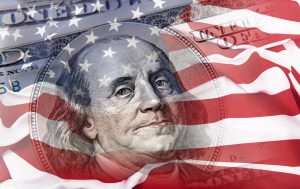Markets entered midweek trading on edge, as fresh evidence of slowing growth from Australia, guarded policymaker comments from Japan, and another unpredictable volley from President Trump underscored the fragility of the current global economic environment.
🇦🇺 RBA in the Spotlight After Weak GDP Print
Australia’s first-quarter GDP came in below expectations, rising just 0.2% QoQ—its slowest pace in three quarters. Annual growth printed at 1.3%, versus expectations of 1.5%. The data all but confirms that the Reserve Bank of Australia has held policy too tight for too long. Traders are now pricing in an 80% chance of a July rate cut, with growing calls for a more aggressive response.
Despite the soft macro print, the Australian dollar stabilized around $0.647. Support came from two fronts: a broadly weaker U.S. dollar and resilience in the country’s services and manufacturing sectors. While the outcome was weaker than hoped, it wasn’t disastrous—providing some cushion for the currency in the short term.
🇯🇵 Yen Recovers as BOJ Reinforces Gradualism
The Japanese yen held steady at 143.9 per dollar after Tuesday’s sharp pullback. BOJ Governor Kazuo Ueda once again emphasized the central bank’s willingness to raise rates if the economic and inflationary outlooks justify it. Ueda reiterated that Japan remains in a moderate recovery phase, supported by strong corporate earnings and business sentiment, although vulnerabilities persist.
Investors await upcoming labor market and household spending data later this week. For now, the BOJ remains in “watch and wait” mode, particularly cautious about mounting global trade risks—most notably those stemming from U.S. tariff policy.
🇳🇿 Kiwi Eyes Xi-Trump Outcome Amid Tariff Noise
The New Zealand dollar hovered around $0.60 after Tuesday’s losses. Sentiment remains shaky, as U.S. President Donald Trump threatens to double tariffs on steel and aluminum imports—a move that could disrupt global supply chains. China, New Zealand’s largest trading partner, remains in the crosshairs, placing the Kiwi in a vulnerable position.
Domestically, while the RBNZ cut its cash rate last month, market expectations suggest the easing cycle is near its end. A rate hold in July is now seen as likely, with a 70% probability of a final 25bps cut in August.
🧱 Trump Adds Uncertainty with Mixed Signals on China
On the geopolitical front, President Trump revived uncertainty over U.S.-China trade relations. In a post on Truth Social, he wrote:
“I like President Xi of China, always have, and always will, but he is VERY TOUGH, AND EXTREMELY HARD TO MAKE A DEAL WITH.”
This follows earlier White House commentary suggesting a potential call between the two leaders later this week. Meanwhile, the legal back-and-forth over Trump’s existing tariffs continued: a U.S. trade court ruled that many of Trump’s levies exceeded presidential authority, only to have the decision paused by a federal appeals court the next day.
This erratic legal and political landscape adds further complexity to already strained U.S.-China negotiations.
🔍 Bottom Line
Wednesday’s session captures a market navigating a crosscurrent of soft data, erratic policy signals, and persistent global uncertainty. The RBA is now under pressure to act quickly, the BOJ remains deliberately cautious, and Trump’s continued unpredictability—especially regarding China—keeps risk sentiment fragile. Investors should expect volatility to remain elevated as more key data and trade headlines unfold through the week.
—
Stay informed with JDR Securities. We’ll continue to monitor global macro shifts as they unfold.



